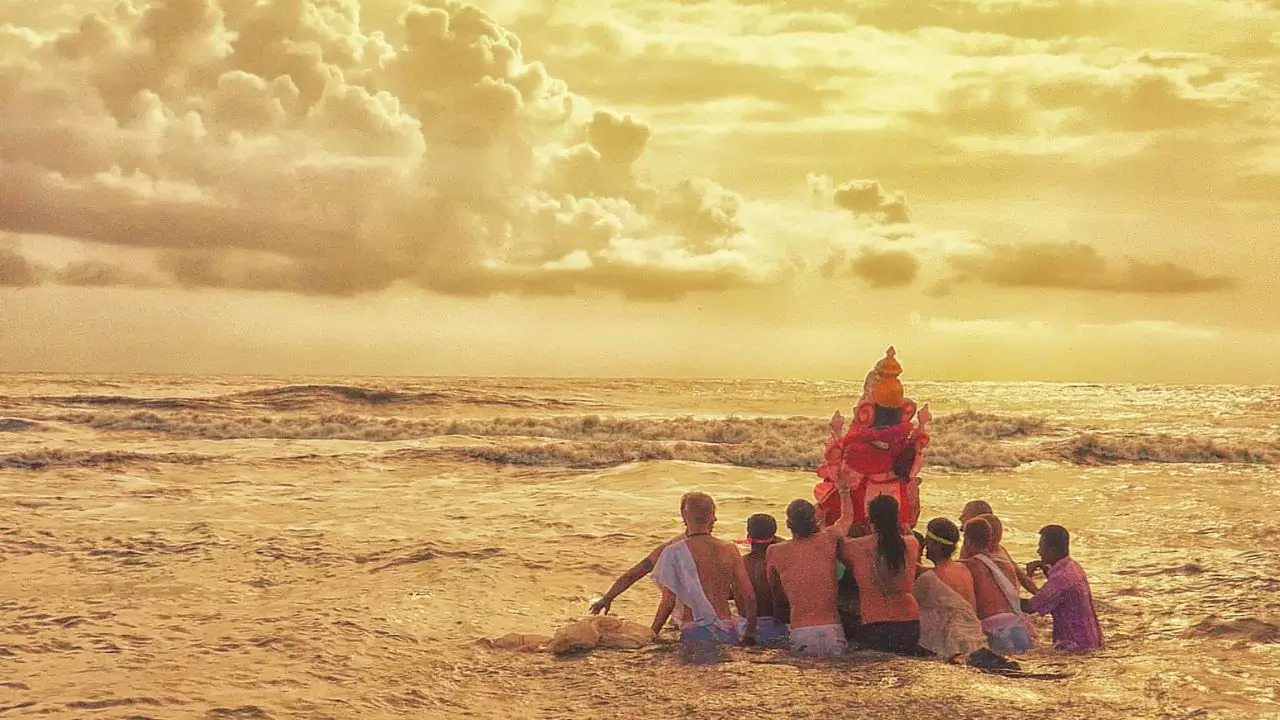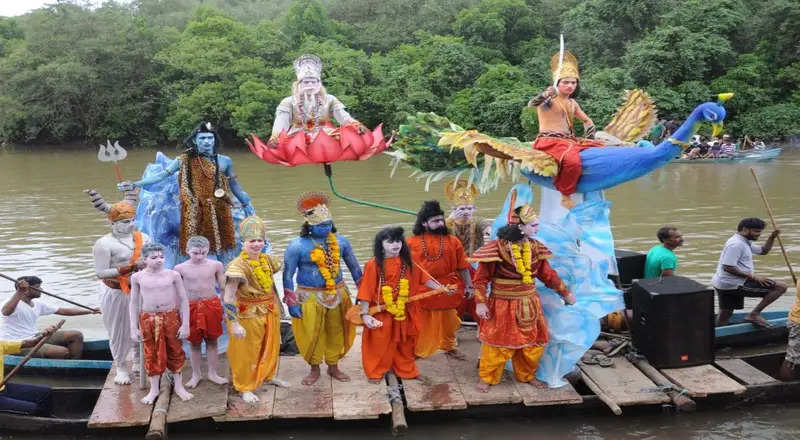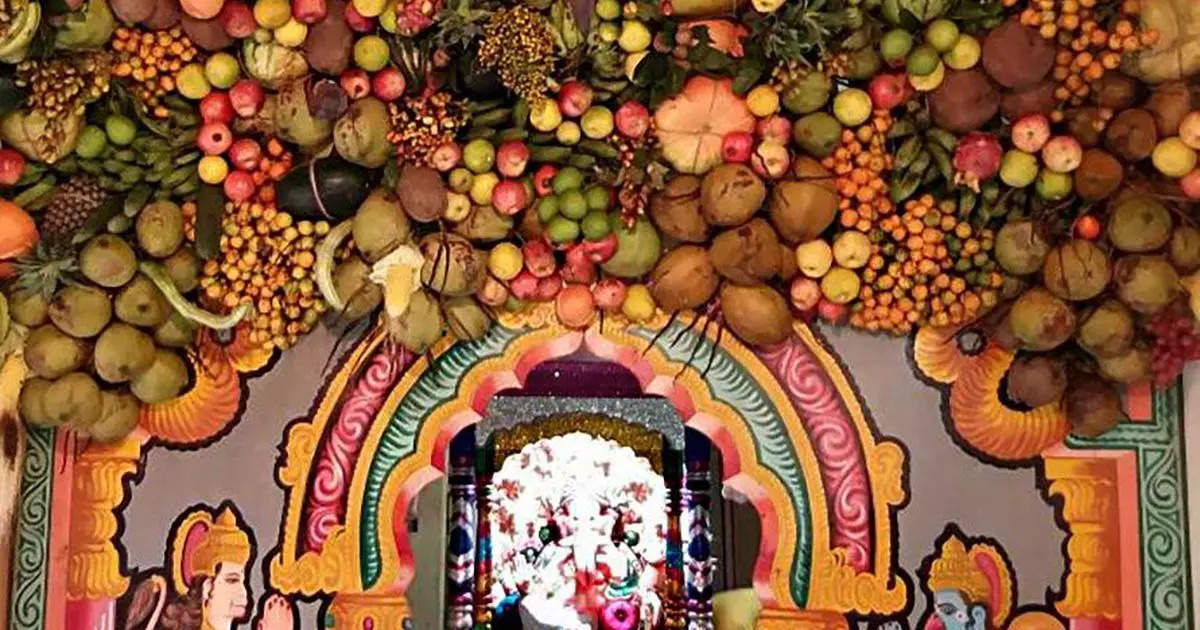
Ganesh Chaturthi celebrations have a new address for travelers: Goa. Credit: Canva
Festival season is here and excitement is in the air. And if your travel plans haven’t changed, Goa in a circle, then be sure to match your getaway with Ganesh Chaturthi Celebrations which mark a period of great festivity in the state. Even as the markets are filled with vibrant stalls selling intricately crafted Ganesha idols, colourful makhans and an array of traditional Chaturthi snacks, a sense of devotion permeates this sunny state. While festivities are the order of the day here, during Ganesh ChaturthiAlso called ‘Chovoth’, Goa’s cultural roots come to light.

Dekhava tradition
In Marcel and Cumbharjua, the ‘Dekhava’ tradition also takes centre stage, with a lively display among families and groups to create the most incredible paintings, which are open to visitors during the festival.
Sangod tradition
The village of Cumbharjua is also known for its unique ‘Sangod’ tradition, where the vibrant procession of Ganesh visarjan is taken out on the seventh day of Ganesh Chaturthi with decorated canoes and boats. According to the Goa Tourism website, a villager, Vinod Phadte, provided a brief description of how the Sangod festival came into being, though it is difficult to pinpoint when the custom began.

He says, “During the Portuguese rule in Goa, the temple of Shri Shantadurga Cumbharjuwekarin was shifted from Corlim to Cumbharjua and then to its present location of Marcel. There was a businessman in Cumbharjua who was in financial difficulties. As a result, he left the idol of Ganesh in the temple of the deity. So, as a commemoration of the times, the idol is carried on a Devicho Sangod on the seventh day and then immersed. This tradition gave birth to the famous Cumbharjua Sangod festival which is celebrated anew every year with enthusiasm.”
The procession includes boats decorated with floats depicting mythological scenes, historical events or contemporary social and political issues. Participants are often dressed in costume and perform skits or dances. The atmosphere is festive and joyous, with people lining the banks of the Cumbharjua canal to watch the procession and cheer on the participants.

Matoli
Matoli is a crucial part of traditional decorations, featuring an intricately crafted canopy of local plants, fruits and herbs carefully arranged over the idol of Lord Ganesha. This vibrant display features an astonishing array of over 100 items, including a mix of wild and cultivated produce, many with medicinal properties. Classic matoli arrangements typically include an array of essentials such as betel nuts, coconuts and a variety of wild and local citrus fruits such as Toring and Mauling (a local citrus fruit), local variety of cucumbers and melons such as Chibud, non-edible wild fruits such as Kanglam, ghagre and Kundalam, wild flowers such as harne and a collection of leaves called gavar along with fruits such as guavas, apples and bananas as well as chitpam, a wild fruit.
Disclaimer:
The information contained in this post is for general information purposes only. We make no representations or warranties of any kind, express or implied, about the completeness, accuracy, reliability, suitability or availability with respect to the website or the information, products, services, or related graphics contained on the post for any purpose.
We respect the intellectual property rights of content creators. If you are the owner of any material featured on our website and have concerns about its use, please contact us. We are committed to addressing any copyright issues promptly and will remove any material within 2 days of receiving a request from the rightful owner.
